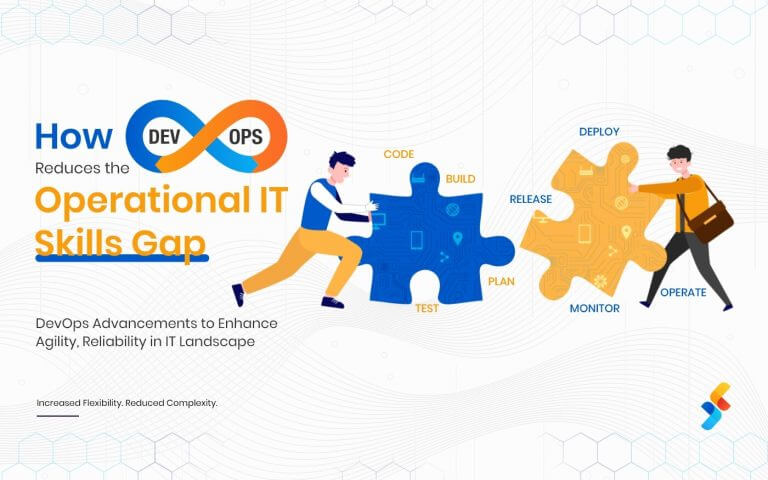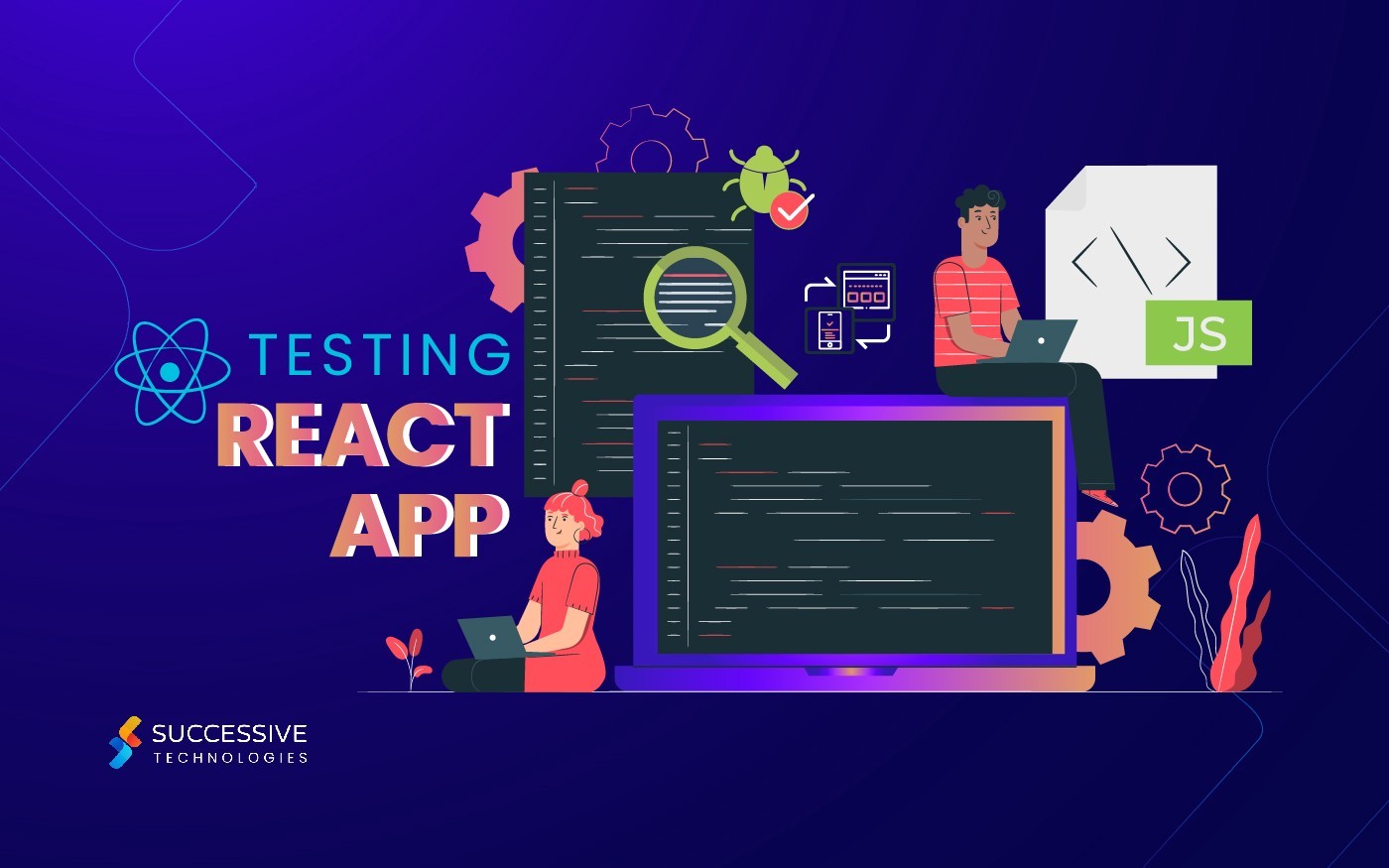The dynamic technological shift is greatly affecting enterprise application development—demanding greater agility and user-centricity. Consequently, a strong focus on a robust tech stack with speed, scalability, and seamless integration is required. Whether you’re building a microservices architecture or a cloud-native platform, Node.js has become the go-to runtime for engineering teams that need to ship faster and scale smarter enterprise applications.
The ecosystem of packages and libraries, as well as versatility, enables developers to create robust enterprise applications, including real-time applications, web APIs, microservices, and IoT solutions. However, using Node.js for enterprise-level development isn’t the same as spinning up a quick API or MVP. It requires architectural discipline, ecosystem mastery, and production-level guardrails.
This guide breaks down what it really takes to develop enterprise-grade applications using Node.js—from tooling and scalability to deployment and long-term maintainability.
Why Node.js Application Development Works for the Enterprise
Powered by Chrome’s V8 engine, Node.js uses non-blocking I/O and event-driven architecture, making it ideal for high-performance apps where concurrency and responsiveness are critical.
But here’s why enterprises specifically choose Node.js app development:
- Fast time to market: JavaScript across front and back ends accelerates dev cycles
- Microservices-ready: Lightweight, modular services built with frameworks like Express or Fastify
- Massive ecosystem: NPM libraries, SDKs, and integrations across industries
- Cloud-native compatibility: Pairs well with containerization, serverless, and orchestration platforms
Core Features of Node.js Driving Success for Enterprise Apps
The architecture, ecosystem, and flexibility of Node.js align closely with the performance, scalability, and developer velocity requirements that enterprise teams prioritize. Here’s a breakdown of the core features fueling its widespread success:
-
Non-Blocking, Event-Driven Architecture
The asynchronous handling of I/O operations means Node.js can manage thousands of concurrent connections with minimal overhead. For Node.js web application development, including real-time, high-traffic applications like chat tools or analytics platforms, it offers improved throughput and responsiveness under load.
-
Single Language Stack (JavaScript)
With JavaScript used both on the frontend and backend, development becomes faster and more unified. This reduces context switching, improves team collaboration, and streamlines full-stack development. Hence, it ensures faster time to market and lower hiring/training overhead across engineering teams for enterprises.
-
Microservices-Ready Architecture
Node.js application development fits naturally into modern microservices environments. It allows teams to build lightweight, independently deployable services that can scale horizontally. The result? Greater flexibility, faster deployments, and more reliable scaling for modular applications.
-
Massive Ecosystem via NPM
With over a million open-source libraries in the Node Package Manager (NPM), enterprise teams can integrate functionality without reinventing the wheel—whether it’s authentication, logging, data processing, or API rate-limiting. This can help accelerate development cycles and access to battle-tested modules.
-
Cross-Platform Compatibility
Node.js runs on major OS environments and can be used to build cross-platform desktop or mobile apps (via frameworks like Electron or React Native). With reusable code across products, it leads to reduced maintenance costs and quicker cross-platform rollouts.
-
Built-In JSON Support
Node.js works seamlessly with JSON, the standard format for REST APIs, NoSQL databases like MongoDB, and cloud-native service integrations. This helps ensure clean API design and smoother integration with modern data services for enterprise-based Node.js application development.
-
Strong Community and Enterprise Backing
Since the OpenJS Foundation maintains Node.js, it already has a widely contributing community that ensures the JavaScript runtime environment is constantly updated with performance enhancements and security patches. Hence, enterprises can be assured of stability, long-term viability, and confidence in continued innovation.
How to Develop a Node.js Application for Smooth Enterprise Operations?
A seamless process for building enterprise applications is needed, from selecting the right toolset to establishing a skilled Node.js app development team. Let’s examine step by step what factors determine the success of your project.
1. Architecture First: Monolith vs. Microservices
Before you write a single line of code, your architecture needs a decision.
- Monolithic Node apps can still serve well for small-to-mid-scale internal tools or admin portals, especially with frameworks like NestJS.
- Microservices work best for apps with multiple independently scaling domains (e.g., payments, notifications, users) or cross-functional teams.
Best practice:
Use Domain-Driven Design (DDD) with independent service boundaries and shared contracts. Employ an API gateway (e.g., Kong, NGINX, or Express Gateway) to manage service discovery and routing.
2. Choose the Right Frameworks and Tooling
Node.js shines with the right tools in place, so you do not have to struggle to build enterprise applications from scratch.
| Express.js / Fastify | Performant, extensible HTTP layers |
| NestJS | TypeScript-based, modular, opinionated architecture (great for large teams) |
| Prisma / TypeORM / Sequelize | ORM-layer control |
| Jest / Mocha / Supertest | End-to-end and unit testing |
| ESLint, Prettier, Husky | Code quality and team-wide consistency |
Bonus: Use TurboRepo or Nx to manage monorepos if your enterprise app spans multiple services or packages.
3. Enterprise-Grade Security from Day One
Security at the edge isn’t enough—every layer should be properly safeguarded. Node.js gives you flexibility—but also puts security in your hands.
Here are some of the security must-haves:
| Helmet.js | HTTP header hardening |
| Rate limiting | Control the amount of incoming or outgoing traffic |
| Input sanitization | Avoid XSS and injection |
| Token encryption and OAuth2/OpenID Connect | Compliance requirements |
| Regular dependency scanning | npm audit, Snyk, or OWASP Dependency-Check |
4. Scale and Performance Optimization
Enterprise apps need to handle spikes, concurrency, and global distribution. Node.js makes this achievable—but only with intentional optimization:
- Use cluster mode (or better, PM2) to leverage multi-core systems
- Apply caching layers via Redis or CDN edge for frequently accessed data
- Leverage asynchronous event queues with tools like RabbitMQ, Kafka, or Bull
- Break down bottlenecks using APM tools like New Relic, Datadog, or Dynatrace
| Note: Node’s single-threaded nature means blocking functions (like file access or heavy computation) should be offloaded or delegated. |
5. CI/CD, Observability & Deployment Strategy
Building the app is just half the game. Delivering and maintaining it is where enterprise devs win or lose.
CI/CD Pipelines
- Use GitHub Actions, GitLab CI, or CircleCI for automated test/lint/build workflows
- Containerize with Docker and deploy via Kubernetes, AWS ECS, or Azure AKS
Monitoring & Observability
- Real-time logs with Winston or Pino
- Distributed tracing via OpenTelemetry
- Health checks, uptime alerts, and rollback capabilities
Versioning & Rollouts
- Canary deployments
- Blue/Green deployments
- Feature flags with LaunchDarkly or Unleash
Make every deployment reversible. Production stability is non-negotiable.
6. Team Practices That Scale
Without strong engineering practices, even great runtimes underdeliver. Therefore, invest in an experienced Node.js app development company for scalable deployments, along with feature-rich enterprise applications.
Here’s what high-performing Node.js enterprise teams get right:
- Strict TypeScript adoption for type safety and maintainability
- Domain-based folder structures for scalability
- Contract-first APIs using tools like Swagger/OpenAPI
- Test coverage targets tied to CI checks
- Internal packages via NPM or GitHub registries to reduce repetition
And most importantly—treat documentation like code. Internal and external APIs should always be self-serve and self-explanatory.
Types of Node.js Apps You Can Build
Node.js has evolved into a mature backend runtime capable of powering complex, high-scale applications. As of now, enterprise teams are leveraging Node.js to build a wide range of products—spanning real-time systems, platform APIs, and intelligent apps.
Here are the most common types of Node.js applications enterprises are investing in:
-
Real-Time Collaboration Tools
This Runtime Environment excels at managing persistent, bi-directional connections—making it ideal for Node.js web application development that requires live data updates. Think:
- Project management platforms with real-time task updates
- Live whiteboarding or brainstorming tools
- Video conferencing with live chat and screen sharing
Use cases: Slack-like internal communication tools, collaborative CRMs, or remote work suites.
-
Streaming and Media Platforms
With its non-blocking architecture, Node.js is well-suited for building media platforms, whether it is web or Node.js mobile application development that require streaming large files or handling continuous data flow.
- On-demand video or music platforms
- Live sports commentary or stock market feed apps
- Podcast or audio streaming services
Use cases: OTT platforms, news streaming portals, or educational content delivery apps.
-
API-First SaaS Platforms
Node.js is a natural fit for building scalable REST and GraphQL APIs. These APIs serve as the backbone of modern SaaS platforms across industries like:
- Fintech
- Logistics
- Healthcare
- Martech
Use cases: Enterprise dashboards, client portals, usage-based pricing systems, or AI-model-as-a-service platforms.
-
E-Commerce and DTC Marketplaces
With support for high concurrency, lightweight request handling, and dynamic content rendering, Node.js powers fast and responsive commerce apps.
- B2B and B2C marketplaces
- Direct-to-consumer product platforms
- Subscription-based commerce engines
Use cases: Personalized storefronts, headless commerce setups, or social-commerce integrations.
-
IoT Management Platforms
Thanks to its event-driven design, Node.js is being used to handle data streams from connected devices across industrial and consumer IoT ecosystems.
- Device telemetry dashboards
- Remote monitoring and control systems
- Real-time alerts and status reporting
Use cases: Smart energy platforms, fleet tracking systems, or health device networks.
-
AI-Driven Apps
Node.js can interface with Python or cloud-based AI services to orchestrate workflows, deliver personalized recommendations, and manage user input.
- AI-powered tutors or support bots
- Product recommendation engines
- Image and voice processing pipelines
Use cases: EdTech assistants, eCommerce personalization, or intelligent service chat apps.
-
Serverless and Edge-Optimized Apps
With platforms like Vercel, Netlify, and AWS Lambda supporting Node.js runtimes, enterprises are deploying Node-based microservices closer to users.
- Lightweight APIs at the edge
- Custom middleware for personalization
- Auth and token services with millisecond response
Use cases: Headless CMS APIs, CDN-personalized content, or regionalized experience tailoring.
Conclusion
Node.js is no longer just for startups and prototypes. It’s powering enterprise apps at PayPal, Netflix, Walmart, and NASA—with performance, flexibility, and developer velocity at its core.
However, building an enterprise-grade platform with Node requires more than spinning up an Express server. It demands architectural clarity, security discipline, and tooling that scales.
Ready to build a high-performance enterprise app with Node.js? Let’s architect a solution that scales with your business. Get in touch with our team to discuss your enterprise app goals.
Frequently Asked Questions
There are a few things to plan for. Complex CPU-bound tasks may require extra architectural decisions—like worker threads or external services. Security vetting is critical when using third-party npm packages at scale. And while talent is widely available, scaling Node.js teams still requires experienced engineers who understand asynchronous flows and event-driven architecture.
Node.js is typically cost-efficient for enterprise builds. Its non-blocking I/O model allows for handling more requests with fewer resources, which translates to savings on infrastructure and runtime. Additionally, using a unified JavaScript stack (frontend + backend) reduces context switching and team size—helping you ship faster without bloating overheads.
Speed and scalability are the two primary drivers. Node.js handles concurrent operations with minimal server strain, which lowers compute costs as traffic scales. Plus, its rich open-source ecosystem accelerates development cycles—reducing time-to-market and long-term maintenance spending. For enterprises, that means optimized resourcing without compromising performance.












